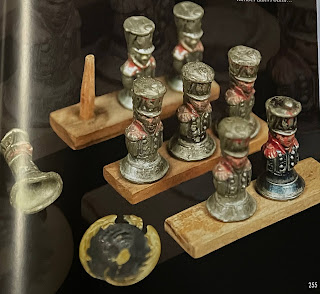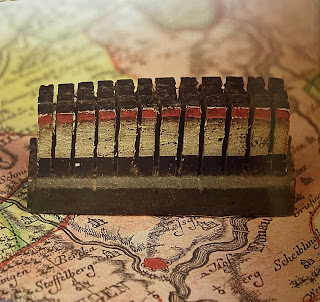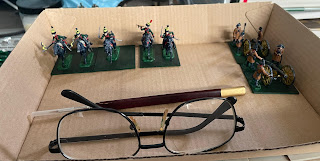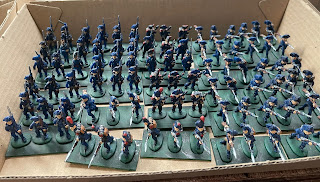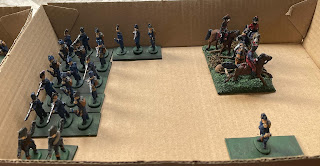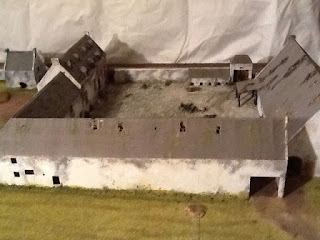Written in 1979, published in 1981, reprinted (with corrections) 1982, as many of you will recall, the time of the workers protest in Gdansk (Danzig) and of the rise to prominence of Lech Wałęsa. Davies history of Poland was the first comprehensive study in the English language and is yet to be surpassed today (as far as I am aware).
(***I was much taken by this book, so this is a long review from my copious notes. Hopefully it will be of enough interest to some to read, but I understand entirely if you merely look at the piccies and move on!***)
Davies’ detailed and comprehensive study is a social, political, economic history of Poland, The book includes numerous supporting maps, diagrams and tables as well as several quotes as examples and ‘illustrations’.
Norman Davies brings a huge breadth and depth of research to his book. This can sometimes make for ‘heavy’ reading as his prose at times reads like a series of statements of names, dates, places. At other times it is quite eloquent, especially when re-telling an anecdote or expanding on a point. This was put brilliantly by the reviewer from the Times Literary Supplement who is quoted on the back cover of the edition that I read; “Dr Davies writes interestingly and well. His moods vary between cool detachment, passionate involvement, and ironic comment.” Overall, the reader is rewarded with a thoughtful, thought-provoking and wide-ranging description of the history of Poland that I’d happily recommend.
In his interesting preface, Davies sets out the challenge of writing a history of another’s country, which is added to the challenges of inherent bias and point of view carried by any historian, as well as the specific challenge of Poland, a country that has not had a continued existence, but existed in several forms. He states that he does not have a theory, cannot provide simple answers to questions like ‘what is Poland?”, “Who is a Pole?”, but instead offer some facts and observations.
First chapter discusses when Polish history began and historical accounts from first century AD. Davies explains how he will divide Polish history into styles of government/political periods in subsequent chapters.
This is followed by a description of the lands comprising and around Poland, geographic and agronomic attributes related to capacity for settlement and agriculture (a lá the Köppen climatic classes). He touches on ethnic migrations, and settlements of pre-written history. “People who imagine that the Poles or Polish culture are somehow ‘indigenous‘ to the Polish lands are as mistaken as those who believe that Europe is the original home of the Europeans. They are looking for full-grown, modern blooms in unlabelled packets of prehistoric mixed seeds. … In the last resort, all our ancestors were alien mongrel immigrants” (p. 47). Once areas settled more permanently (~tenth century) the pockets or more cultivatable land resulted in “…the typical Polish pattern clearly observable in historic times, of deeply-rooted, self-sufficient but widely scattered localities” (p. 50).
Over the course of the book (recalling that this is only volume one), Norman Davies relates or puts forward ideas/theories/possible reasons for the historical observations that he describes. For example, in the area of historical geography. The idea that the land maketh the people in terms of society, social structure and national psyche. [I see the effect of these factors in Australia, particularly in the culture of the longest-lasting and oldest surviving culture in the world, but also in various generations of immigrants—especially those living or working beyond the urban areas]. So “Polish locality combined the economic self-sufficiency of European settlements with a degree of isolation comparable to that of Russia”, leading to “…inhabitants of the localities [who] could well afford to resist the advances of outside authorities as unwarranted interference in their private affairs” (p. 51). So, “the Polish-Lithuanian state was as completely decentralised as the Russian state was centralised. Its regions were as wayward… one has , the idea that Poland’s history of invasion and partition is driven by it’s lack of natural defensive frontiers, while the same geography also contributes to the inability of invaders to conquer the territory “…the only effective way of controlling Poland for any length of time, once it was overrun, has been by indirect rule and local autonomy” (p. 57). In the same chapter he presents an alternative idea, that the timing and degree of the rise in size, power and sophistication of the Polish-Lithuanian Commonwealth, long ahead of its immediate neighbours—and perhaps the ease with which it occurred—lead to “the decentralised traditions of defence, finance, and executive power… It could be argued that Poland developed too soon, or too easily” (p. 58). He dismisses these as providing “…the variable constituents of social and economic life… [but] political affairs are conducted by men whose perception of the objective realities of their predicament is rarely confident and never exact… decisions were taken or avoided which could have been different, and which could have led to different results… it is Man, not Geography, that is the villain” (p. 60).
Following this, the remainder Part A of the book is a more ‘standard’ history, from the first century to 1572. Each chapter covers the rulers, lands, conflicts and other interactions with neighbours and touches on key people in the arts, sciences and other areas of endeavour. The chapters end with a summary of the success or otherwise of that period of rule and its legacy for modern Poland.
The first two of these chapters were of least interest to me* but, once the story moved to the beginnings of what became the Polish-Lithuanian Commonwealth, I became more engaged. This was fascinating from the start. A union by marriage of the young Lithuanian king Jogaila and the even younger, 11-year old(!), Polish princess Jadwiga, orchestrated by the Polish and Lithuanian barons. Davies tells us that Jadwiga was not happy about the marriage (which occurred instead of her marrying the Austrian Wilhelm von Hapsburg) and concludes “Thus were the fortunes of two countries served by the tears and humility of an unhappy girl” (p. 118). Nevertheless, the Polish-Lithuanian state was ahead of its time. A union of two nations, acting as one but maintaining their independent identity—similar to the later relationship between England and Scotland in their union and eventual United Kingdom, as Davies adds to assist his English-speaking readers.
*The middle ages (broadly) is a period of history that does not grab me (with the exception of Crusades (from a Ayyubid perspective), Mongols and Mamluks—the first two appear as ‘cameos’ in this book). I have ‘dipped my toe’ in many times, but it does not excite the interest and passion that other periods do. For me its Classical/Greco-Roman to around the second century, then pike and shot, horse and musket and early modern.
The union, under King Jogaila and his heirs, was orchestrated, perhaps manipulated by the barons. They took control of legislation, land and economy. “The Jagiellonian period witnessed the emergence of five separate and exclusive estates – the clergy, the nobility, the burghers, the Jews, and the peasantry” (p. 126). Nevertheless, it saw an expansion of Polish-Lithuanian lands, the defeat of the rival Teutonic Order (aided greatly by the Reformation^), some conflict with the expanding Ottoman Empire, increasing conflict with Muskovy and the “…multilateral conflict involving the Swedes, the Danes, the Poles, and the Muscovites, which contested the dominion of the whole Baltic area and was not finally resolved until 1721” (p. 147).
^Davies tells us that their ranks were decimated by mass conversions to Lutheranism. He also adds a interesting note about the continuation of the order, to the present day, after its ‘dissolution’ in 1525 but as one that “…confined.itself to practical religious and charitable work” (p. 143).
There was also continued economic progress in artistic and scientific endeavours. The University of Cracow, initially founded in 1364, “second place only to Prague in the seniority of Central Europe’s seats of learning” (p. 99), was re-established in 1400 as Jagiellonian University. In the “world of ideas… in science, literature and learning, the Polish talent was astonishingly rich and profound” (p. 148). Graduates of Cracow and of Padua included such esteemed people as Nicholas Copernicus, Jan Kochanowski and Jan Zamoyski. Copernicus, most famous as the astronomer who proposed the sun-centred solar system, “…was also a qualified doctor of medicine and of canon law; Kochanowski, the poet, studied politics; Zamoyski, the politician, studied poetry…[they all studied the classics] …they were all pubic figures, with a strong sense of civic duty…all striving towards conscious ideals of beauty and harmony” (p. 151). “Humanist learning, reverence for antiquity, individualism and the quest for complete knowledge, an interest in public affairs and in the harmonious purpose of human life - these which are generally understood to have constituted ‘Renaissance Man’ (p. 151).
The first part of the book ends with the establishment of the Polish-Lithuanian Commonwealth, spurred by the lack of an heir to Sigismund II August. “One indivisible body politik, one king, elected not born; one Sejm; one currency. The Lithuanians were to keep their own law, their own administration, their own army, and the titles of their princely families” (p. 153).
It is Part B, “The Life and Death of the Polish-Lithuanian Republic 1596–1795”, which constitutes 3/4 of the book’s length, that encompasses the period in this first volume of Davies’ Polish History that most interests me. He begins this section with thematic chapters describing the structure and changes in the Polish-Lithuanian Republic from in the areas of religion, social structure, economy and trade, towns and cities, structure of government/constitution and foreign affairs.
Davies builds a detailed picture of the society and economy of the Polish-Lithuanian Commonwealth. The burgeoning noble class (around 10% of the population) and peasants, with smaller groupings of Jews and Church. The vibrant grain trade, down the Vistula River to Danzig, disrupted by the wars of the mid 17th to mid 18th centuries, not recovering from the disruption, declining and bringing with it lower standards of living, increased poverty and a state ‘ripe for the plucking'; “…the decline of the Vistula trade, and the decay of economic life in general, must be seen as a necessary prelude to the Partitions” (p. 291).
Davies reminds us that cities were originally defined by their municipal status and legal privileges, so quite different from our modern perception of dense, urbanised areas, “…only the cluster of houses, churches, streets and municipal buildings in the city centre possessed a distinctly urban character…” (p. 293). Polish cities of the period were multicultural in character, with autonomy of municipal government, but also for communes, such as the Jews (specifically) but also the Armenians, for example, in Wilno. The cities of the Commonwealth did not expand as others in Europe did, however, as the Polish Sejm passed a law in 1595 to protect the rights of the nobles “…which forbade native burghers to engage in foreign trade. […] Henceforth, the more profitable branches of trade were increasingly taken over either by agents of the nobility or by foreigners” (p. 306). Warsaw was an exception to this, it’s growth attributed largely to it becoming the seat of court and government. Overall though, “attempts at reform had to wait till the second half of the eighteenth century. By that time, the vast majority of the Republic’s 1 400 cities were tiny private administrative centres whose average population of 750 persons lived largely from agriculture” (p. 320).
The make up and operation of the Polish-Lithuanian noble democracy makes for fascinating reading. Unlike anything else in Europe at the time and in many ways ahead of its time. Operating partly like a debating club and partly like rival gangs.
“A Royal election in Poland was something rather special. In theory, every nobleman of the Republic was entitled to attend, and in practice, anything between ten and fifteen thousand usually did. […] the process whereby this horde of armed horsemen reached a unanimous decision from dozens of candidates and viewpoints can only be described as one of collective intuition” (p. 331–332).
It was not entirely ordered nor civil either, with “scenes of unutterable confusion, pitched battles and private fights…” (p. 332). Ahead of its time, as I noted above. It was a state that was run more akin to a modern board than to any system of government then (or now).
“No proposal could become law, and no decision was binding, unless it received the full assent of all those persons who were competent to consider it. A single voice of dissent was equivalent to total rejection” (p. 339).
Yet, in the main, it worked.
Where it fell down was in allowing disputes to become civil wars. These distracted and weakened the state, leaving it open to external forces. This quote from Rousseau sums it up brilliantly; “Think very carefully before you disturb that which has made you what you are. […] If you cannot prevent your enemies from swallowing you whole, at least you must do what you can to prevent them from digesting you” (p. 369).
The role of the king in the Polish-Lithuanian Commonwealth had nothing of the divine right of other nations, instead performing more like a chairman. The king did however have latitude in foreign diplomacy and was able to pursue individual or dynastic aims. He could not make agreements that the Sejm did not approve, but could pursue his own aims provided they did not conflict with the interests of the state.
The last seven chapters of the book cover key events in the history of Poland from 1569–1795, separated chronologically into chapters related each of the rulers or ‘houses’ who held the position of elected king (Valois, Bathory, Vasa, Michal, Sobieski, Saxony, Russian Protectorate). As with the first part, the reader comes to this chronology far better informed and hence develops a richer understanding of the ‘what’ due to the broader thematic background which preceded it.
The examples of the election of each king are more relatable and understandable having read of the structure and process of the ‘noble democracy’. The developments in war, trade, society and areas under the rule of the Polish-Lithuanian Commonwealth (Republic) during each period are present in the readers’ mind within a larger framework of the whole.
For me, coming from a key interest in the military history, these chapters were the icing on the cake. I not only found out where a list of named conflicts fits in the timeline, but also have begun to get a picture of how they lead to or influenced one another. Not that Norman Davies makes the mistake of relating history as a simple timeline of cause and effect one on the other, but he does eloquently indicate how past times relate to future actions and events.
Take for example the confusing mix the Khmelnytsky Uprising, Thirteen Years’ War and The Deluge (Potop). Davies discusses details of each in turn—actually out of chronological order, since it is within the chapter of the Vasas as kings, beginning with the Deluge, related to the Thirteen Years’ War and back to Khmelnytsky. Having related the events of Khmelnytsky’s (Chmielnicki) uprising he ties them together in a masterful way:
“The rebellion of Bodgan Chmielnicki produced effects far exceeding its original aims. […] …the ungoverned Ukrainian provinces were ravaged by rampant peasant bands and by the savage reprisals of the magnates headed by Wiśniowiecki. These killings closed the door to compromise. […] That same Spring, the armies of the Tsar invaded the Republic on two fronts. In turn, the Muscovite invasion alarmed the Swedes. In 1655, the Swedish King, Charles X, descended on the Republic from Pomerania and Livonia. His operations provoked the intervention in 1656 of the Great Elector of Brandenburg-Prussia, followed in 1657 by George Rakocsi, Prince of Transylvania. These were the years of The Deluge” (p. 465–466).
Again, earlier in the same chapter:
“This situation [the Baltic power struggle] lasted from the start of the Livonian war in 1558 until the Treaty of Oliwa in 1660. After that, when the Polish side of the triangle had collapsed, Sweden was left facing Muscovy alone, and did so until the defeat of Charles XII by Peter the Great at Poltava in 1709” (p. 454–455).
In no way is this presented as a linear timeline, but a series of reactions to events, mixed with a whole lot of self-interest and opportunism.
Jan Sobieski, most famous of all the kings of Poland, is described in all his glory and his flaws.
Early in his reign Sobieski expanded the army but, interestingly and contrary to the earlier changes implemented by Sigismund III (Zygmunt III)—who had reformed the army after the Swedish model—he focussed on mobility, especially the cavalry arm. This included providing Cossack regiments with chain-mail armour, thereby creating the pancerni, issuing short lances to the Tartar light horse and increasing the number of dragoons all aimed “…to provide fuller support for the strike force of heavy Hussars—Sobieski’s favourite department…” (p. 478)—to the delight of wargamers recreating the battles of the period! (Interestingly, I stumbled across a boardgame, inspired by Davies’ book, see References below).
 |
Polish winged hussars. The finest cavalry in Europe in their time and ever (for mine). Seen here charging Swedish cavalry in the first half of my a recent game of Klissow 1702.
|
Davies’ retelling of Sobieski’s key role in the defence of Vienna is fascinating, particularly for the reproduction of two, long letters that the king wrote to his wife; one from Brno (the Czech town nearest to Austerlitz!) the other from the Grand Vizier’s camp after the victory. Yet it was this victory and, most especially, the campaign that followed, that was to prove so costly to the Republic. Initially and overtly, in economic terms, but more importantly in that it diverted attention from the Baltic and the Commonwealth’s eastern border, thus enabling the rise of the influence of the Republic’s three neighbours, Russia, Prussia and Austria, all keen to gain territory and influence.
The Russian influence lead to the election of the Saxon Elector Augustus as Augustus II of Poland—the duplicitous, deceitful and self-serving Augustus, as I know him. Davies’ better informed view is less pointed. Augustus emerges as somewhat shallow and self-serving, having done little for the Republic, an aspect which he shares with most of his predecessors (even the great Sobieski, in the end). He did not have the full support of the nobles, leading to two factions, a division that was exploited during the Great Northern War. The victory of Russia in that war further entrenched that nation’s influence within the Polish Sejm. Having been lead “… into the Russian camp by the nose, and thus to … political bondage from which the Poles have never fully escaped” (p. 502), the Polish-Lithuanian Commonwealth was slowly emasculated and set on the path to the Partitions.
There was a brief respite, of sorts. Augustus' son eventually succeeded him as Augustus III, on the former’s death, after the re-elected Stanislaw Leszczyński (who had become king in place of Augustus II for five years under the support of Charles XII) was rejected by the Czar. This sparked the War of Polish Succession and the election of the young Augustus “…under the safety of Russian bayonets…” (p. 504). “The Republic resigned itself to an extended association with Saxony. Saxony rejoiced in the fact that its ruler’s fortunes in the Republic had been reprieved” (p 505). So began a period of relative quiet in which the Republic stagnated, but, in the background, fields such as the arts and science flourished. Augustus III died in 1763, bringing the Saxon era of the Polish-Lithuanian Commonwealth to and end. “This time the Russians had plans of their own. Catherine II was intent on reforming her Polish protectorate in her own image” (p. 510).
So to the final act and terrible climax of Book 1.
“The partitioning of Poland, effected in three stages in 1773, 1793, and 1795, was without precedent in modern European History. Although victorious powers habitually stripped their defeated rivals of territorial possessions and were not averse to dividing the spoils of India, America, or Africa, there is no other instance when they deliberately annihilated one of Europe’s historic states in cold blood” (p. 511).
The Commonwealth had its share of
problems, derived from within, from its schizophrenic make up as a
Republic of two independent states, to obstructions of reform, to an
elected monarchy that made it a plaything of other nations, lack of a
central treasury and increasing poverty and servitude. The partitions
though, were far from the natural extinguishment of a ‘failed state’.
“Poland’s internal troubles were systematically promoted by her more
powerful neighbours” (p. 513).
The partitions were not the result of directed policy, but a series of actions and reactions, mixed with plenty of self-interest and opportunism. As with the Deluge, Davies explains these sad and at times horrific events with eloquence, in plenty of detail and with a touch of sarcastic humour.
“The Polish reformers, obstructed in their plans to remedy their country’s ills by legal means, turned to an illegal adventure which had to be forcibly suppressed by Russian arms. On each occasion, in order to avoid the risk of a wider conflagration, and prior to her punishment of the rebellious Poles, the Empress of Russia was obliged to seek the consent and assistance of her Prussian or Austrian rivals. On each occasion, as the price of their consent and assistance, Berlin and Vienna demanded a slice of Polish territory. In this way, each Partition was the logical consequence of an attempt to launch a programme of reform. Once this mechanism is understood, it is clear that the Partitions were not merely unfortunate accidents of foreign policy whose chance occurrence interrupted the progress of internal reform. The Partitions were a necessary part of the process whereby reform had to be obstructed if Russian supremacy was to be maintained. The Republic of Poland-Lithuania was not destroyed because of its internal anarchy. It was destroyed because it repeatedly tried to reform itself” (p. 527).
The Constitution of the 3rd May was developed by the reformers of ‘Four Years’ Sejm’, a gathering called to ratify the proposal by King Stanislaw-August of a Russo-Polish alliance against the Turks, rejected by Catherine who saw no benefit nor need from a Russian perspective. The Constitution lead “to the Confederation of Targowica; the Confederation to the Russo-Polish War of 1791-2; the War to the Second Partition of 1793; the Partition to Kościusko’s National Rising of 1794; the Rising to the Third Partition and the destruction of the state” (p. 530).
Tadeusz Kościusko, perhaps the second-most famous Pole in the socio-political arena (Copernicus, surely, is the most famous Pole of all?). A man after whom there are several monuments in Poland and in North America, not to mention in whose honour the highest mountain on the Australian continent was named (by Polish-born explorer and businessman Paul Edmund Strzelecki). In fact, it is thanks to Kościusko that I came across Davies’ book as it was some preliminary searching around the expansion of my Revolutionary-Napoleonic interests to include the Russo-Polish War of 1792 and the Kościusko Uprising that brought me to it.
Kościusko, a man who “combined the idealism of intellectual circles with the practical skills of a soldier” (p. 533). Having trained in France, Kościusko (for lack of funds to buy a commission) travelled to North America and made a name for himself as an artillery commander during the American War of Independence. Returning home to farm, he was recruited by the Four Years’ Sejm to reform the army, along with Prince Poniatowski, the King’s nephew. They were soon tested.
A confederation of Poles loyal to the Czar signed an Act of Confederation at Targowica , thus starting the Polish-Russian War of 1792. It began well for the Poles with victory at Battle of Zieleńce, but the army soon faced being caught between two larger Russian armies. The King “…without warning… announced his adherence to the Confederation of Targowica, and ordered the troops to hold their fire. […] Faced by the Russians’ threefold numerical superiority—96 000 men to 36 000 on the Polish side—he wanted to save his country unnecessary suffering” (p. 536). The Second Partition soon followed. This time though, the Poles did not go quietly.
As with the war of 1792, the uprising began well for the Poles with victories in the field, followed by the slaughter of the Russian garrison of Warsaw and retribution against their countrymen who had been in league with the Czar Catherine’s protectorate. A government was formed, acts passed and “for a few brief months through the summer, the two parts of the old Republic were reunited” (p. 540). It did not last long. The combined Prussian and Russian armies counter-attacked and, when Kościusko faced the reinforced Russians under Suvorov, was defeated after a fierce struggle and captured. Less than a month later the capital was taken and “..the population put to the sword” (p. 541).
 |
Hagen Miniatures' range of Poles for the war of 1792 and the Kościusko uprising. I already have some of their lovely Potemkin Russians and intend to add some of these too.
|
It was the end of Poland. The
Austrians took a large area around Cracow, the Prussians took the area
around Warsaw as ‘New South Prussia’ and the Russians took a slice of
the eastern borders. The three powers agreed never to use the title
‘Kingdom of Poland’ in their own titles.
I came to this book with fragments of knowledge of the history of Poland, derived from other history; chiefly the French Revolutionary wars into the Napoleonic era and the Great Northern War. It pieced together the huge gaps in the jigsaw in my mind. I had the third partition as a partially formed piece at one end, in the middle an expanding understanding of the Great Northern War and the role of the Polish-Lithuanian Commonwealth (or more appropriately the effects of the war on the Commonwealth) and at the other end a list of seemingly disconnected conflicts (Polish-Ottoman War (1620–1621), Khmelnytsky Uprising (Polish-Cossack War 1648–1667), Russo-Polish War (1654–1667, Thirteen Years' War) & Second Northern War (1655–1660, The Deluge/Potop), Polish-Tartar War (1666–1671), Polish-Ottoman War (1672–1676), Great Turkish War). I leave the book with a far more complete picture of the whole and a greatly expanded understanding the ‘what’ but, more importantly, some of the possible ‘whys’. Thank you Norman Davies.
Rating

First impressions 6/10 (weighting 0.1)
Presentation 7/10 (weighting 0.1)
Content 9/10 (weighting 0.3)
Supporting content—pictures, maps, appendices 9/10 (weighting 0.2)
Sources 9/10 (weighting 0.2)
Value for money 8/10 (weighting 0.1)
Reference and related
Davies, N (1982) God's playground : a history of Poland. Volume 1: The origins to 1795. First Published 1981. Reprinted 1982 (with corrections). Clarendon Press, Oxford. 605 pp.
Wallace, M (2009) God's Playground. Warfrog Games (later Treefrog Games). More information: https://www.boardgamegeek.com/boardgame/38309/gods-playground/credits.



